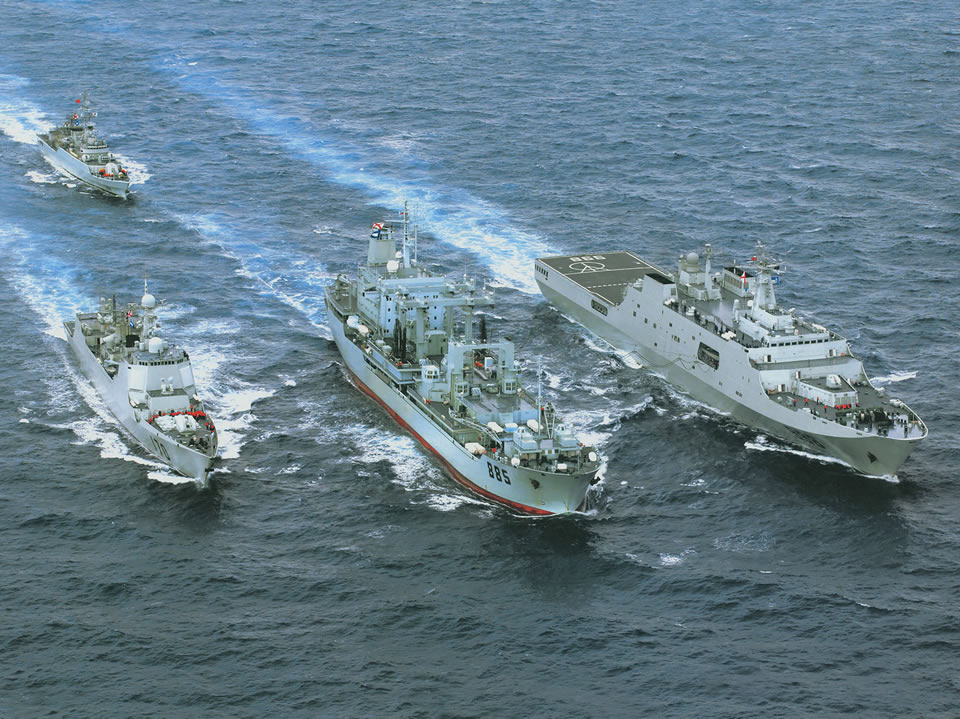.
.
.
China Accuses U.S. of Creating Chaos

The United States will monitor the South
China Sea to see whether “de-escalatory steps” are being taken, a U.S.
State Department official said on Monday, a day after China resisted
pressure to rein in actions in the disputed waters.
The official spoke as U.S. Secretary of
State John Kerry arrived in Sydney for talks on regional security with
Australian officials, which will also involve Defense Secretary Chuck
Hagel.
A U.S. proposal for a freeze on provocative
acts in the South China Sea got a cool response from China and some
Southeast Asian nations at a regional meeting at the weekend, an
apparent setback to U.S. efforts to thwart China’s assertive moves.
The U.S. official said the United States
would follow up on those talks by assessing an ASEAN-China meeting due
in a few weeks’ time on implementing a 2002 declaration on conduct in
the South China Sea, something that “equates to the freeze.”
“We will also be monitoring the actual situation around the rocks, reefs, and shoals in the South China Sea,” he said.
China’s Xinhua state news agency accused
Washington of “stoking the flames,” and “further emboldening countries
like the Philippines and Vietnam to take a hardline stance against
China, raising suspicion over the real intention of the United States
and make an amicable solution more difficult to reach.”
“It is a painful reality that Uncle Sam has
left too many places in chaos after it stepped in, as what people are
witnessing now in Iraq, Syria and Libya,” Xinhua added in a commentary.
“The South China Sea should not be the next one.”
A spokeswoman for the U.S. State Department
hit back by saying the United States was not responsible for
instigating instability in the South China Sea.
“It’s the aggressive acts the Chinese have taken that are doing do,” Marie Harf told a regular news briefing.
“Everything that we are doing is designed
to lower tensions, to get people (to) resolve their difference
diplomatically and not through coercive and destabilizing measures like
we’ve seen the Chinese take increasingly over the past several months.”
Spike in tensions
South China Sea tensions spiked in May when
China parked a giant oil rig in waters also claimed by Vietnam. The
United States and the Philippines have both called for a freeze in such
moves, as well as on building and land reclamation work on disputed
islands.
The rancour over the disputed sea has split
ASEAN, with several states including some of the claimant nations
reluctant to jeopardize rising trade and investment ties with China.
China has been able to head off regional
action on the maritime issue before, most notably in 2012 when an ASEAN
meeting chaired by Chinese ally Cambodia broke down in acrimony.
Australia was one of the countries to support the U.S. proposal at the weekend ASEAN meeting in Myanmar.
The U.S.-Australia meetings will include
discussions on cooperation in missile defence, cyber security and
maritime security, U.S. Defense Secretary Chuck Hagel told reporters at a
briefing with Australian counterpart David Johnston.
The two sides will also sign an agreement
reached between U.S. President Barack Obama and Australian Prime
Minister Tony Abbott on the deployment of U.S. marines to Australia for
joint exercises and training in areas such as disaster relief.
Hagel said the Unite States was firmly
committed to its policy of a strategic rebalance to the Asia-Pacific,
something that has irked China and been questioned by allies who wonder
the extent of U.S. commitment to the region.
“We have an interest here, we will continue to have an interest here, we are a Pacific power,” he said.
Some 1,150 Marines are stationed in Darwin
in Australia’s tropical north under a 2011 agreement that launched
Obama’s “pivot” to Asia.
The contingent, primed to respond to
regional conflicts and humanitarian crises, is expected to swell to
2,500 by 2017. Johnston said troop numbers would be discussed at
Tuesday’s talks, amid reports that the U.S. plans to station more
fighter jets and bombers in Australia’s north.
Copyright Reuters 2014

